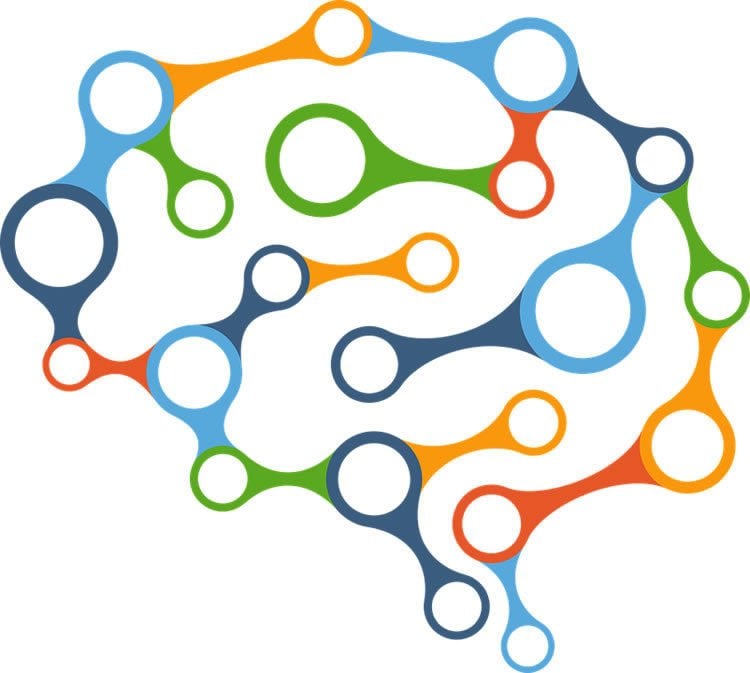Summary: Researchers reveal a compound in green tea extract may help protect the brain against cognitive decline associated with Alzheimer’s by coating toxic oligomers.
Source: McMaster University.
Green tea is widely considered to be beneficial for the brain. The antioxidant and detoxifying properties of green tea extracts help fight catastrophic diseases such as Alzheimer’s. However, scientists have never fully understood how they work at the molecular level and how they could be harnessed to find better treatments.
Research from McMaster University is shedding new light on those underlying mechanisms. Preclinical evidence suggests that the green tea compound known as EGCG interferes with the formation of toxic assemblies (oligomers), one of the prime suspects in the early steps of the molecular cascade that leads to cognitive decline in Alzheimer’s patients.
“At the molecular level, we believe EGCG coats toxic oligomers and changes their ability to grow and interact with healthy cells,” explains Giuseppe Melacini, lead author and a professor in the Departments of Chemistry and Chemical Biology as well as of Biochemistry and Biomedical Sciences at McMaster, who has worked on Alzheimer’s-related research for 15 years.
The findings, which are the results of a decade of advancements in nuclear magnetic resonance (NMR) methodology and are featured in the cover page of the Journal of the American Chemical Society, could lead to new therapies and further drug discovery, say researchers.
Despite decades of research, the causes of Alzheimer’s remain not fully understood, and treatment options are limited. According to the latest census numbers, seniors living in Canada now outnumber children, dramatically increasing the need for effective drugs and prevention. By some estimates, the number of Canadians with dementia is expected to rise to 937,000 by the year 2031, an increase of 66 per cent compared to current numbers.
“We all know that currently there is no cure for Alzheimer’s once symptoms emerge, so our best hope is early intervention. That could mean using green tea extracts or their derivatives early on, say 15 to 25 years before any symptoms ever set in” says Melacini.

Next, researchers hope to tackle nagging problems such as how to modify EGCG and similar molecules so they can be used effectively as a food additive, for example. EGCG is unstable at room temperature and notoriously difficult to deliver into the human body, particularly the brain.
“Food additives could prove to be a crucial therapy or adjuvant” says Melacini. “It will be important to capitalize on them early in life to increase the odds of healthy aging, in addition to exercise and a healthy lifestyle.”
Source: McMaster University
Image Source: NeuroscienceNews.com image is in the public domain.
Original Research: Abstract for “Molecular Mechanism for the (−)-Epigallocatechin Gallate-Induced Toxic to Nontoxic Remodeling of Aβ Oligomers” by Rashik Ahmed, Bryan VanSchouwen, Naeimeh Jafari, Xiaodan Ni, Joaquin Ortega, and Giuseppe Melacini in Journal of the American Chemical Society. Published online August 25 2017 doi:10.1021/jacs.7b05012
[cbtabs][cbtab title=”MLA”]McMaster University “How Green Tea Extract Could Help Protect Against Alzheimer’s.” NeuroscienceNews. NeuroscienceNews, 11 October 2017.
<https://neurosciencenews.com/green-tea-extract-alzheimers-7724/>.[/cbtab][cbtab title=”APA”]McMaster University (2017, October 11). How Green Tea Extract Could Help Protect Against Alzheimer’s. NeuroscienceNews. Retrieved October 11, 2017 from https://neurosciencenews.com/green-tea-extract-alzheimers-7724/[/cbtab][cbtab title=”Chicago”]McMaster University “How Green Tea Extract Could Help Protect Against Alzheimer’s.” https://neurosciencenews.com/green-tea-extract-alzheimers-7724/ (accessed October 11, 2017).[/cbtab][/cbtabs]
Abstract
In Vivo Brain Glycine and Glutamate Concentrations in Patients With First-Episode Psychosis Measured by Echo Time–Averaged Proton Magnetic Resonance Spectroscopy at 4T
(−)-Epigallocatechin gallate (EGCG) effectively reduces the cytotoxicity of the Alzheimer’s disease β-amyloid peptide (Aβ) by remodeling seeding-competent Aβ oligomers into off-pathway seeding-incompetent Aβ assemblies. However, the mechanism of EGCG-induced remodeling is not fully understood. Here we combine 15N and 1H dark-state exchange saturation transfer (DEST), relaxation, and chemical shift projection NMR analyses with fluorescence, dynamic light scattering, and electron microscopy to elucidate how EGCG remodels Aβ oligomers. We show that the remodeling adheres to a Hill–Scatchard model whereby the Aβ(1–40) self-association occurs cooperatively and generates Aβ(1–40) oligomers with multiple independent binding sites for EGCG with a Kd ∼10-fold lower than that for the Aβ(1–40) monomers. Upon binding to EGCG, the Aβ(1–40) oligomers become less solvent exposed, and the β-regions, which are involved in direct monomer–protofibril contacts in the absence of EGCG, undergo a direct-to-tethered contact shift. This switch toward less engaged monomer–protofibril contacts explains the seeding incompetency observed upon EGCG remodeling and suggests that EGCG interferes with secondary nucleation events known to generate toxic Aβ assemblies. Unexpectedly, the N-terminal residues experience an opposite EGCG-induced shift from tethered to direct contacts, explaining why EGCG remodeling occurs without release of Aβ(1–40) monomers. We also show that upon binding Aβ(1–40) oligomers the relative positions of the EGCG B and D rings change with respect to that of ring A. These distinct structural changes occurring in both Aβ(1–40) oligomers and EGCG during remodeling offer a foundation for understanding the molecular mechanism of EGCG as a neurotoxicity inhibitor. Furthermore, the results reported here illustrate the effectiveness of DEST-based NMR approaches in investigating the mechanism of low-molecular-weight amyloid inhibitors.
“Molecular Mechanism for the (−)-Epigallocatechin Gallate-Induced Toxic to Nontoxic Remodeling of Aβ Oligomers” by Rashik Ahmed, Bryan VanSchouwen, Naeimeh Jafari, Xiaodan Ni, Joaquin Ortega, and Giuseppe Melacini in Journal of the American Chemical Society. Published online August 25 2017 doi:10.1021/jacs.7b05012






